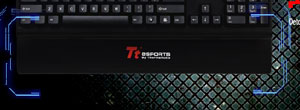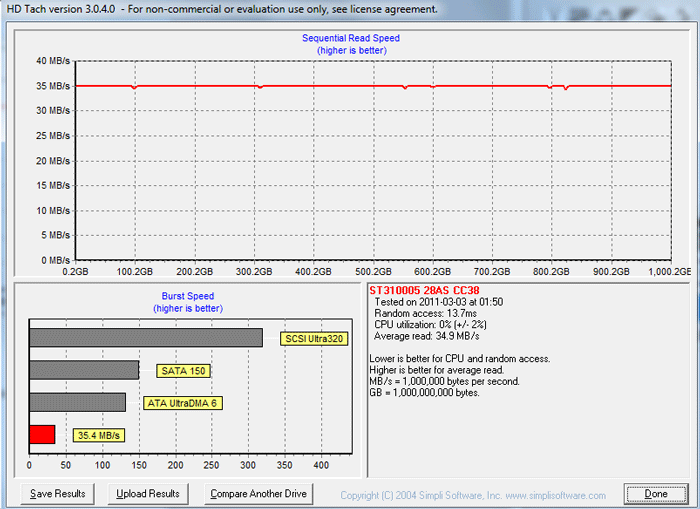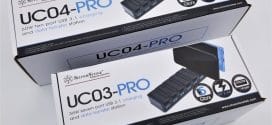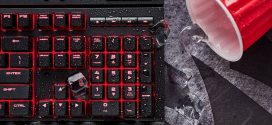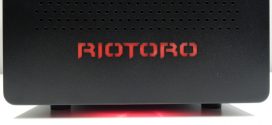Out of the wide range of keyboards available on the market, the Tt eSports Meka G1 mechanical keyboard shows features only found in high-end keyboards.
Introduction
With the plethora of keyboards available on the market, choosing the right keyboard can pose a difficult task. While majority of the keyboards share a set of common features, there are several that stand out of the crowd. Mechanical keyboards, in particular, provide a completely different experience by reducing the response time, providing tactile response, as well as a completely different feel for the keyboard. While mechanical keyboards are not new to the market, their availability has significantly decreased due to high production costs. Mechanical keyboards used to dominate the keyboard market until the development of significantly cheaper rubber dome and zipper switch keyboards. While the overall price for the newer keyboards created a more affordable market, the quality of the keyboards has declined significantly.
In 2010, a variety of different distributors, including Thermaltake, released relatively cheap high performance keyboards oriented specifically for gaming audience. With significantly faster response rate and extreme durability these mechanical keyboards provide top performance in gaming as well as other daily appliances. In the price range of $100-200 these keyboard are a must have for any computer user that spends a significant in front of computer, whether it be for recreational purposes or work. Thermaltake Meka G1 is priced at 139.99 on the Thermaltake website.
Thermaltake Meka G1 is a mechanical keyboard oriented specifically for gaming. By utilizing Cherry MX Black Mechanical Switches, this keyboard is able to accomplish a polling rate of up to 1000 Hz, ensuring an instant relay of the message from the press of the button to the computer. Due to the significantly faster response rate, as well as higher sensitivity, this keyboard is capable of not only providing the ultimate gaming experience, but also improving one’s typing drastically. The Meka G1 has also been designed to provide maximum comfort to the user, shown in the use of cylindrical keycaps, commonly observed in ergonomic keyboards, as well as the detachable armrest. To contribute to the unique architecture of this keyboard, the Meka G1 has been equipped with 2x USB 2.0 ports, as well as its own In/Out Audio Channel, allowing for easy connection of the headsets, microphones, or headphones directly into the keyboard. While this is just a basic overview of the keyboard, let us take a closer look in order truly appreciate some of the features presented in this mechanical keyboard.
Mechanical Switch Architecture
When choosing the right keyboard it is essential to understand the basics of the keyboard architecture. In general, as consumers, the individual’s view is geared towards the fancy looks and macro capabilities.While on the outside, all keyboards might look almost identical, what lies beneath the cover is actually completely different. There are various types of switches that are used in order to register the pressure exerted upon the keys and tranduce it into an electrical signal that will be processed by the computer as a particular character. These switches are not only responsible for the relay of the information: they also directly interact with the user, providing valuable tactile response, and they also restore the pressed key back into its original position. Let us take a look at various switches are commonly observed in different keyboards.
Rubber Dome
The most common type of mechanisms used in the modern keyboards are the rubber dome switches. The primary reason for their popularity are the low production cost, and the resulting cheap market price for the keyboard. The rubber dome switches lay on a rubber membrane. Beneath each of the switches there is an incomplete circuit board. Graphite rods positioned on the inside of each dome lower in response to the applied pressure to complete the circuit. After completion of the circuit the proper signal is transduced for the processing. The button returns to its normal position with the aid of the rubber dome surrounding the graphite rod. The apparent flaw of this mechanism is the rubber dome itself. After continuous pressing of the same key, which is rather common for gaming, the malleable rubber membrane becomes deformed, requiring the user to press harder in order to elicit a response from the keyboard. Additionally, with time, the key does not restore to the proper position fast enough, making typing extremely uncomfortable for the user. Overall, these type of keyboards experience an extremely fast decline with extensive use, and generally do not last longer than 2 years.
Scissor Switch
This types of switch is more common in thinner keyboards that can be commonly observed in laptops or wireless sets. While the basic mechanism is very similar to the rubber dome, with the exception that rubber dome is significantly smaller, the responsibility for the tactile response is relayed to the scissor-like plastic slits. A major advantage of this construction is that there is no significant loss of the tactile response even with extensive use. However, overall the performance decline is inevitable due to the poor connection between the scissor slits and the circuit board beneath. With constant transduction the contact on the board becomes deionized, and therefore unable to retain the conductivity required for the circuit to be completed.
Mechanical Switch
While these switches were common in IBM keyboards in 1980s, an extremely high manufacturing cost has led to creation of cheaper alternatives like the rubber dome and scissor switches. However, the high cost can be justified by the extreme durability of these switches. Instead of the graphite conductor used in the cheaper keyboards, mechanical switches use a metallic conductor that is not susceptible to deionization. At the same time, the tactile response does not depend
Cherry Corps Mechanical Switches
Cherry Corps MX mechanical keyboard switches have recently gained popularity amongst various vendors and commonly appear in high-end mechanical keyboard like Tt eSport Meka G1 and Razer BlackWidow. MX mechanical switches come in various colors with unique tactile responses and features. MX Cherry Black Switches are most renowned in their application for gaming due to the lack of tactile response and fast polling rate. For those that seek comfort in typing, MX Blue Switches with tactile response and a click feature, or quieter MX Brown switches with outstanding tactile response, are the best candidates for the job.
Features
Up to 1000 Hz polling rate
High performance 1000 Hz poling rate provides an outstanding performance unmatched by regular gaming keyboards.
Cherry Black Mechanical Switches
Cherry Black Mehchanical Switches provide top gaming experience with life expectancy of up to 50 million keystrokes
USB to PS/2 Adapter
USB to PS/2 Adapter eliminates ghost keys while fully utilizing the “N key rollover” function, observed only in high-end keyboards.
USB Hubs and Audio Jacks
USB Hubs and Audio Jacks are placed on the back of the keyboard for user’s convenience.
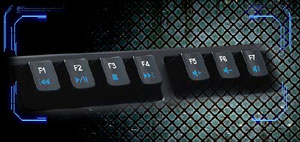
Provide instant control over audio sound without while gaming
Military Grade Cable
Military grade cable is made to last for years
Gold-plated USB connectors
Top of the line gold-plated USB connectors ensure the higher transfer rate and reliability
Detachable Palm Rest
Detachable palm rest is designed to provide comfort during long hours of work or gaming
Pictures & Impressions
The Tt eSports Meka G1 comes in very well designed packaging. While the product is not prone to mechanical damage, the box is sturdy and is sufficient to ensure safe delivery of the product. On the front cover of the packaging a consumer can find the image of the product, as well some of the special features of Meka G1. The back of the packaging reveals some of the specifications of the Meka G1 in multiple languages.
After opening the package we were surprised to find cardboard cover with a recap of the features, as there is no practical use for it, aside from serving as cushioning. The contents of the package include the keyboard itself and the armrest. The keyboard has a noticeable difference in quality and weight. The Meka G1 is estimated to weigh about 3 lbs. Both the keyboard and the armrest are made from the same material–smooth polycarbonate–which is extremely durable.
The very first thing we noticed were the In/Out audio and 2x USB 2.0 ports on the back of the keyboard. This is an extremely convenient feature that is not common to many keyboards. In addition, rubber spacers can be observed on the bottom surface of the keyboard as well as the armrest, to prevent this keyboard from sliding around on desks.
The military-grade cable splits into USB, audio in, and microphone wires, all of which are gold-plated. While the cable itself is rather short (approximately 3 feet in length), the overall design allows for very simple cable management. With an additional USB 2.0 connector, the keyboard can draw plenty of power from the computer, allowing for connectivity to external enclosures as well as flash drives. On the back of the keyboard there is a quality check sticker.
Overall, the keyboard layout is fairly basic, but there are several definitive features that make this keyboard unique. The LEDs for Num Lock, Caps Lock, and Scroll lock glow bright red, serving as a clear identifier as to which mod is active. The overall curvature of the keys suggests that the keys are cylindrical, commonly observed on ergonomic keyboards. In addition, the labels on all keys are engraved into the actual keyboard, which provides a nice feel and is actually sufficient enough to serve as an identifier in the dark, although this definitely does not compensate for the lack of backlighting.
The Windows button, commonly placed next to the Ctrl key, has been replaced with a Function key. This is definitely convenient, considering that an accidental failure tap of the Windows key instead of Ctrl could ruin gameplay for gamers. The newly added Function key allows access to additional 7 keys to control some of the media functions like volume, mute, play/pause, next, previous, and stop. However, these keys do not compensate for the macro capabilities of some of the gaming keyboards, which are rather commonly used in MMORPG’s. Finally, the keyboard can be raised and tilted with the feet on the back panel of the keyboard, which can provide additional comfort to users.
Testing & Methodology
The OS we use is Windows 7 Pro 64bit with all patches and updates applied. We also use the latest drivers available for the motherboard and any devices attached to the computer. We do not disable background tasks or tweak the OS or system in any way. We turn off drive indexing and daily defragging. We also turn off Prefetch and Superfetch. This is not an attempt to produce bigger benchmark numbers. Drive indexing and defragging can interfere with testing and produce confusing numbers. If a test were to be run while a drive was being indexed or defragged, and then the same test was later run when these processes were off, the two results would be contradictory and erroneous. As we cannot control when defragging and indexing occur precisely enough to guarantee that they won’t interfere with testing, we opt to disable the features entirely.
Prefetch tries to predict what users will load the next time they boot the machine by caching the relevant files and storing them for later use. We want to learn how the program runs without any of the files being cached, and we disable it so that each test run we do not have to clear pre-fetch to get accurate numbers. Lastly we disable Superfetch. Superfetch loads often-used programs into the memory. It is one of the reasons that Windows Vista occupies so much memory. Vista fills the memory in an attempt to predict what users will load. Having one test run with files cached, and another test run with the files un-cached would result in inaccurate numbers. Again, since we can’t control its timings so precisely, it we turn it off. Because these four features can potentially interfere with benchmarking, and and are out of our control, we disable them. We do not disable anything else.
We ran each test a total of 3 times, and reported the average score from all three scores. Benchmark screenshots are of the median result. Anomalous results were discounted and the benchmarks were rerun.
Please note that due to new driver releases with performance improvements, we rebenched every card shown in the results section. The results here will be different than previous reviews due to the performance increases in drivers.
| Test Rig |
|
| Case | In-Win Dragon Rider |
| CPU | Intel Core i7 930 @ 3.8GHz |
| Motherboard | ASUS Rampage III Extreme ROG – LGA1366 |
| RAM | 3x 2GB Corsair 1333MHz |
| CPU Cooler | Thermalright True Black 120 with 2x Noctua NF-P12 Fans |
| Drives | 3x Seagate Barracuda 1TB 7200.12 Drives Zalman N Series 128GB SSD |
| Optical | ASUS DVD-Burner |
| GPU | Palit GTX 560 Ti Sonic SLI |
ASUS ENGTX 560 Ti SLICase Fans3x Noctua NF-P12 Fans – Side
3x In-Win 120mm Fans – Front, Back, TopAdditional Cards
Ineo I-NPC01 2 Ports PCI-Express Adapter for USB 3.0PSUSeaSonic X750 Gold 750WMouseLogitech G5KeyboardThermaltake Meka G1 (mechanical switches)
Compaq KB-0311 (rubber-dome switches)
Methodology:
In order to provide the most objective testing of the Thermaltake Meka G1 keyboard, several factors were taken into consideration. While there are no solid benchmarks to test keyboard capability and polling rate, the Meka G1 was evaluated in several categories, including gaming, typing, response time, feel, and was compared to keyboards with other switches in order to assess the overall quality.
PassMark Keyboard Test
PassMark KeyboardTest™ allows users to quickly check that all the keys on their computer keyboard are functioning correctly, check the keyboard LED’s, look at the internal scan codes being generated by the keyboard and measure typing speed.
The down and up stroke of each key is registered and highlighted on a graphical image of a keyboard. Each time a key is pressed a variety of state information is updated in the window and on the keyboard picture.
Testing for this benchmark was performed using the four most commonly used keys in gaming (W,A,S, and D) on the Tt eSport Meka G1 mechanical keyboard, as well as a rubber dome keyboard Compaq KB-0311 and scissor switch keyboard IH-K225LB.
| Tt eSport Meka G1 | Compaq KB-0311 | IH-K225LB | |
|---|---|---|---|
| Maximum signal transduction | 40.2 characters/sec | 32.6 characters/sec | 10.6 characters/sec |
| Depression time | 140 ms | 148 ms | 190 ms |
| Minimum Lag Time | 24 ms | 190 ms | 110 ms |
| Standard Lag Time | 66 ms | 223 ms | 129 ms |
Parameter Definition:
Maximum signal transduction: a reading taken when a single key is held down for 20 seconds. Demonstrates the maximum transmission capabilities of the keyboard.
Depression time: amount of time required for the key to retun to its position. Measures the speed of tactile response
Minimum lag time: minimum lag time that is observed between hitting two keys continuously. Demonstrates the lag time that it takes for the keyboard to initiate actuation (varies by user.)
Standard lag time: a lag time observed while typing the WASD keys. Demonstrates the average lag time that is experience in the game while using the keyboard (varies by the user.)
Results: In the PassMark KeyboardTest™, the Tt eSports Meka G1 clearly demonstrates superior performance to both comparison keyboards in all 4 of the parameters that were tested. While the Black Cherry MX switches do not have the best tactile response, they are definitely able to compete with scissor switches. The maximum transmission of over 40 characters/sec is the least bit impressive and shows that the design of the keyboard has truly been optimized to deliver maximum performance. The lag times were taken to measure the lag that results during the actuation response, and clearly, the Meka G1 takes the crown, making this keyboard a great choice for gaming.
USB 2.0 Tests
The USB 2.0 port on the back of Tt eSports Meka G1 has been tested in order to assess the maximum transfer rate possible while transferring the data from an external drive unto the computer. An external Thermaltake Max5G enclosure loaded with a 1 TB Seagate Barracuda 7200 rpm (maximum speed 100 MB/s) was used to assess the maximum transfer rate of the provided USB 2.0 port.
HD Tach 3.0.4.0 Short Bench (8 Mb zones)
HD Tach 3.0.4.0 Long Bench (32 Mb zones)
After both long and short benchmarks on HD Tach 3.0.4.0, it clear that the maximum transfer rate for the provided USB 2.0 is 34.9 MB/s, which typical of a standard USB 2.0 port. We originally considered that the transfer rate might be a little slower than an actual direct connection between an enclosure and a motherboard port, but clearly, the keyboard’s USB 2.0 ports are efficient and are optimized to provide maximum performance.
Overall experience
After using this keyboard extensively for a period of three weeks, the comfort and performance provided by this keyboard never ceased to amaze. The overall curvature of the keyboard, as well as the armrest, seemed to fit our hands perfectly. The keys provide an instant response even with the slightest pressure allowing for a significantly faster typing speed.
Conclusion
The Thermaltake eSports Meka G1 has demonstrated outstanding performance in both gaming and typing. While Cherry MX Black Switches do not provide an additional tactile response, the sensitivity of the keys and super fast actuation rate make this keyboard a top choice for any gamer. The level of comfort that this keyboard provides clearly supports this statement. Cylindrical keycap design, as well as the armrest, clearly support the hand and allow for the minimization of the finger movement during typing.
Thermaltake did introduce some innovative features that are definetely worth mentioning.The greatest feature is this keyboard has 2x USB 2.0 and Audio In/Out ports. It is extremely convenient to simply plug the external enclosure or the headset into the keyboard rather than going all the way to the back of the desktop. The military grade cable is not only durable, but actually serves a practical purpose of cable management. Since the Meka G1 is equipped with an 2x USB 2.0 cables as well as Audio In/Out ports, military grade cable is the best way to contain the four output cables.
The overall quality of the keyboard is excellent. The material from which the keyboard is made, including the Cherry Black MX switches, are definitely solid and made to last. This keyboard can serve for a really long time considering, that each switch has a lifetime of 50 million strokes and can be easily replaced.
While Meka G1 is solid, there are a few features that could benefit in making this product into an ultimate gaming keyboard. The ability to use macros is definitely a major must-have for any professional gamer. In addition, while this is a great high performance keyboard the overall look is rather plain and would benefit from the addition of backlighting.
| OUR VERDICT: Thermaltake eSPORTS Meka G1 Mechanical Keyboard | ||||||||||||||||||
|
||||||||||||||||||
| Summary: Tt eSports Meka G1 mechanical keyboard demonstrates the level of performance and comfort observed only in high-end keyboards. For its innovative features and quality, the Tt eSports Meka G1 earns the Bjorn3D Golden Bear Award. |
 Bjorn3D.com Bjorn3d.com – Satisfying Your Daily Tech Cravings Since 1996
Bjorn3D.com Bjorn3d.com – Satisfying Your Daily Tech Cravings Since 1996









